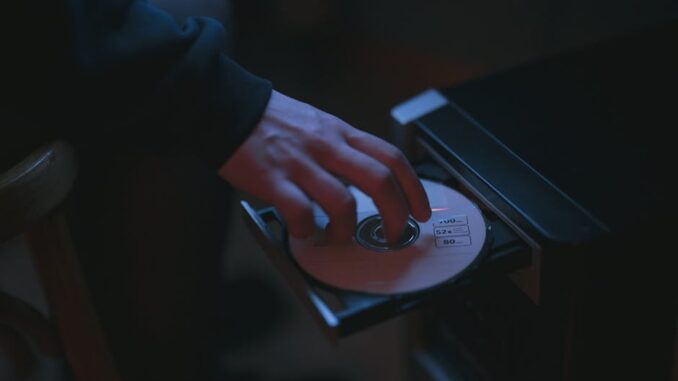
Summary
The 3-2-1 backup rule is a simple yet effective strategy to protect your valuable data. It involves having three copies of your data, on two different media, with one copy stored offsite. This approach minimizes the risk of data loss due to various threats, from hardware failures to natural disasters. Adopting the 3-2-1 rule ensures data resilience and peace of mind in today’s unpredictable digital landscape.
Protect your data with the self-healing storage solution that technical experts trust.
Main Story
Okay, let’s talk backups. In this digital age, losing your data can feel like losing a limb. Seriously, whether it’s family photos, crucial business documents, or that spreadsheet tracking your crypto investments, it’s all vulnerable. Think about it: hardware fails, software glitches happen, and cyberattacks are, unfortunately, becoming commonplace. That said, what’s the answer? The 3-2-1 rule, and honestly, it’s simpler than it sounds.
So, what is it? Well, it’s a straightforward strategy that boils down to this:
-
Three copies of your data: You need the original, plus two backups. Relying on just one copy? That’s tempting fate, it really is. Having multiple copies means you have redundancy – a safety net, basically. If one copy gets corrupted, you’re not sunk.
-
Two Different Media: Don’t put all your eggs in one basket, right? Use different types of storage. A local hard drive, an external drive, a NAS (Network Attached Storage) device, even cloud storage… mix it up! That way, if one storage type fails – and trust me, they will fail eventually – you’ve got backups elsewhere.
-
One Offsite Copy: This is the big one. At least one copy needs to be somewhere else. Why? Think fire, flood, theft. If your house or office goes up in flames, your local backups are toast. Cloud storage is an obvious choice, or even storing a hard drive at a friend’s place. The key thing is its not with you.
Why bother with all this, you ask? Because it works.
-
First and foremost, it’s about preventing data loss. Multiple backups significantly reduce the risk of losing everything. Imagine losing all those family photos, or client data. Its horrifying.
-
Then, there’s disaster recovery. If something does happen, you can get back on your feet quickly. We are talking minimal downtime. I remember one company that suffered a ransomware attack; they’d followed the 3-2-1 rule, and they were back up and running in hours, while their competitors were still scrambling.
-
And, speaking of cyberattacks, the 3-2-1 rule is your defense. Ransomware can encrypt your local files, but an offsite backup lets you wipe your systems and restore everything without paying a ransom. Which is great!
-
Data Integrity is also key, multiple copies lets you compare them to one another, just in case one gets corrupted.
-
Plus, let’s be honest, it buys you peace of mind. Knowing your data is safe lets you focus on other things.
So, how do you actually implement this? Here’s a simple breakdown:
-
Local Backup: Get an external hard drive. It’s quick, easy, and lets you backup important stuff in seconds.
-
Cloud Backup: Use a reputable cloud storage service. It is automated, offsite, and means your data is accessible from anywhere. Most importantly, it happens automatically.
-
Second Offsite (or Offline) Backup: Consider a second cloud storage account with a different provider or create a periodic backup to an external drive that you store at a separate location, like I said. That is going to make life a lot easier for you, should the worst happen.
Oh, and test your backups! You’d be surprised how many people have backups that don’t actually work. I did that once and lost a ton of stuff, lesson learned. And, really, the 3-2-1 rule? It’s not just a good idea, it’s a fundamental principle for data protection. I believe its a core tenet of any modern business, no matter the size.


So, if I understand correctly, my cat’s Instagram account, with its vital collection of blurry paw pics, also needs the 3-2-1 treatment? I guess that cloud storage better make room for “Mittens does a loaf” volume 7!
Absolutely! “Mittens does a loaf” deserves the best protection! Think of it as preserving a vital piece of art. Plus, who knows? Volume 7 might be the one that goes viral! The 3-2-1 rule applies to all important data, no matter how furry. Let’s keep those paws safe!
Editor: StorageTech.News
Thank you to our Sponsor Esdebe – https://esdebe.com
So, if “hardware fails” and “cyberattacks are commonplace,” does that mean my meticulously curated collection of vintage meme screenshots requires enterprise-grade security? Just confirming the level of existential threat to “Doge rides again, circa 2013.”
That’s a great point! While enterprise-grade might be overkill, those vintage memes are cultural heritage! The 3-2-1 rule, even in a simplified form, ensures that precious digital artifacts like “Doge rides again” survive the test of time and technology. Let’s make sure Doge is around for future generations!
Editor: StorageTech.News
Thank you to our Sponsor Esdebe
So, if my sourdough starter also needs 3-2-1 protection, does that mean I need to FedEx a backup blob to a secure offsite facility? Asking for a friend… who is very attached to his levain.
That’s a hilarious thought! But seriously, the principle applies – think of your starter as valuable data! While FedEx might be extreme, keeping a dried backup in the freezer (or sharing some with a fellow baker) is your offsite strategy. Data – or delicious bread – should never be lost!
Editor: StorageTech.News
Thank you to our Sponsor Esdebe